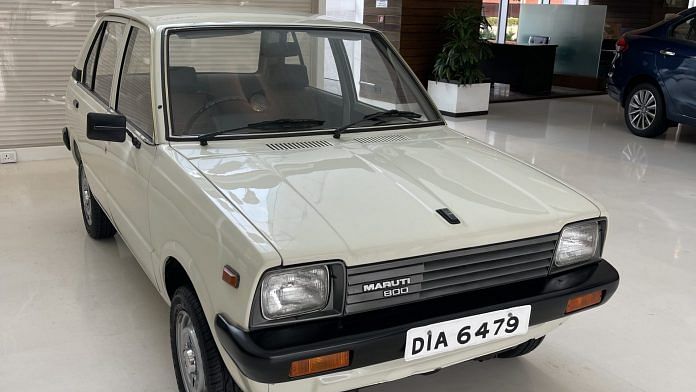In December 2023, Maruti-Suzuki will celebrate the 40th anniversary of the delivery of their first ever car, a white Maruti 800 bearing the rather humdrum registration plate DIA 6479 that was delivered to New Delhi resident Harpal Singh. Singh had won the rights to this car in a lottery and then Prime Minister Indira Gandhi personally handed over the keys to him. Since then, through twists and turns and ups and downs, Maruti-Suzuki has established itself as India’s largest carmaker. And late last year, as it kicked off its 40th year celebrations, the carmaker made a momentous announcement — the fact that they had produced a cumulative 25 million cars in India.
But on 1 April this year, Maruti-Suzuki also officially gave up a part of its history. Under the hood of DIA 6479 that now sits at the company’s headquarters in Vasant Kunj, New Delhi is a 796cc engine (although everyone rounded the number off to 800cc). This engine, titled the F-series, that provided locomotion to successive generations of Maruti 800s, Alto’s and the Maruti Van/Omni has also fallen victim to the new Real Driving Emissions (RDE) norms that have come into force. It is by far and away the most successful engine, not just for Maruti-Suzuki, but in the history of Indian automotive history. An estimated eight million produced were produced.
But why did the F-series engine need to die?
C.V Raman, chief technical officer, Maruti-Suzuki and a near-40 year old veteran of the company himself is not as sentimental about the motor as this writer might have wanted him to be. “The fact is that it would have cost a lot of money to get this engine up to the new emissions standards and while we could have done it, you have to keep in mind that in the not-so-distant future, we will have BS7 emission norms also coming in. And (we) will have to make further investments then. There is no doubt that the engine served us well, but it was time to retire it.”
And while Raman has a point, the other reason for the withdrawal of the F-series engine was the gradually declining sales of cars they were fitted in. In fact, Maruti-Suzuki only fitted the engine on the Alto 800 when it was withdrawn. Entry-level Maruti products today feature the 1000cc K10-series engine. “There is still a market for the 800cc car, but it is growing smaller as people want more from their vehicles,” Raman admits.
All that is practical talk, 800 was love.
Also read: India’s EV market is battling a subsidy controversy but Ather Energy determined to beat crisis
The road to freedom
As a teenager growing up in the 1990s, the Maruti 800 was for many of us, our first ‘car’, it was the car we learnt driving on, it was the car we sneaked out at night to places like ‘Landing Point’ in Delhi and maybe even had our first kiss in. And while one never really needed to pop open the hood on a Maruti 800, the F-series unique selling proposition, as one would call it, was its reliability. It is hard to disassociate the engine from the car. After all, the engine capacity gave the car its name. That said, in its earlier avatars, it was an incredibly easy engine to tinker with and learn the basics, something that today involves a laptop. Those of us born in the late-1970s and early 1980s in India saw how the Maruti 800 changed the roads of this country, it changed the way we thought of cars.
Much like the Honda 97cc engine that pioneered the ‘Fill It, Shut It, Forget It’ revolution with the Hero Honda CD100, the F-series also gave many millions of Indians freedom. Freedom to explore and drive around this vast country. And millions of cars with the 800cc F-series engine, especially Altos, still roam the streets. Though Maruti 800s have for the large part disappeared, there is a significant collector community dealing and repairing old ones.
In a country with a young population, we tend to forget history, let alone remember automotive history. But I believe the Maruti-Suzuki F-series engine is something worth remembering, not just because it was a commercial superhit but because of the role it played in modern Indian history. One could argue that if it wasn’t the Maruti 800, some other car would have come in its place. But the fact is that it was the Maruti 800, it allowed Indians to make history for almost four decades.
@kushanmitra is an automotive journalist based in New Delhi. Views are personal.
(Edited by Anurag Chaubey)




Ooooo